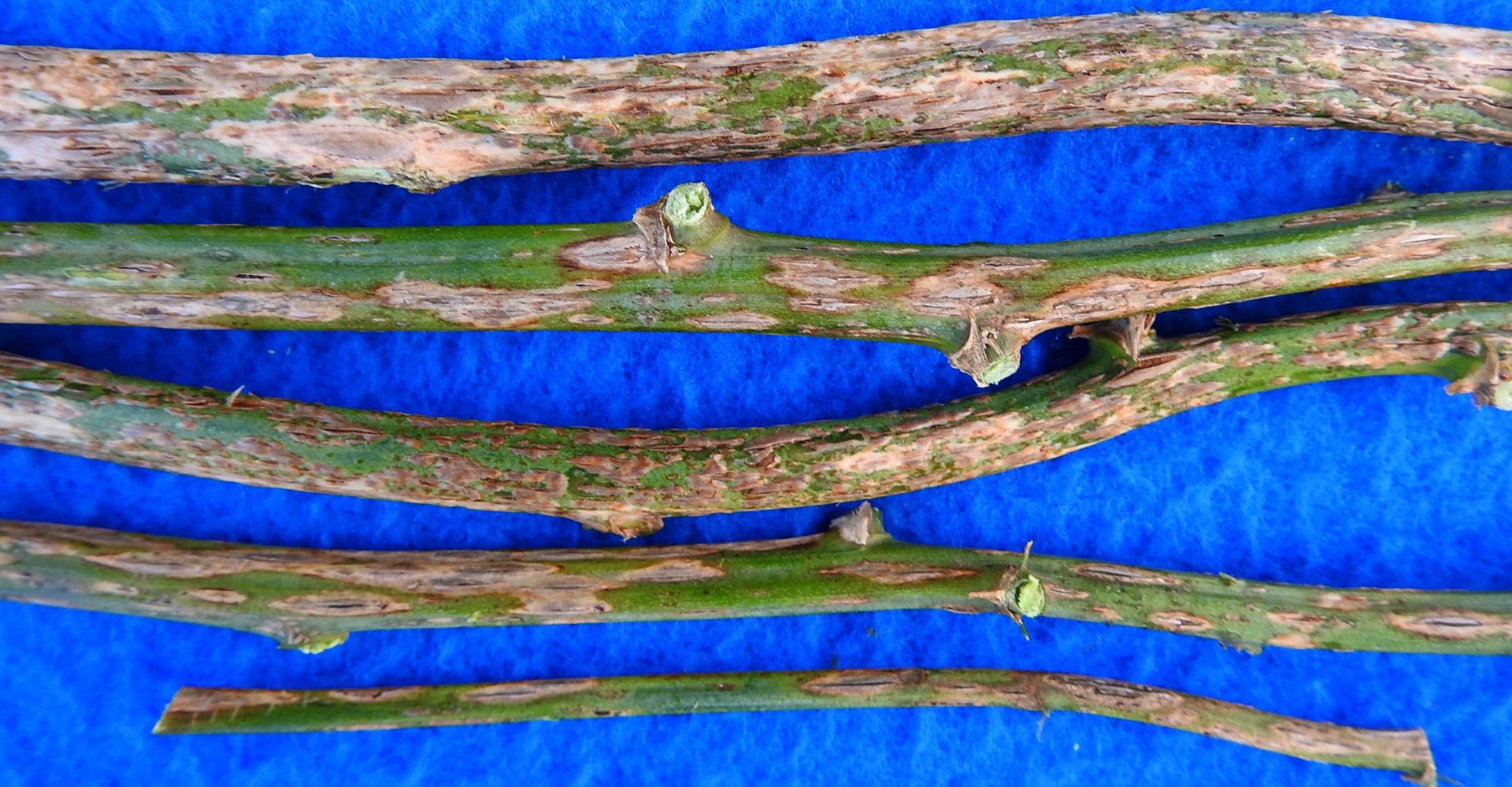Prepared/Updated: October 2022
Rust is one of four diseases that can affect asparagus on Long Island and elsewhere in the northeast. Diseases have not been major constraints to growing this crop on LI as they have been in large production areas; however, these pathogens can survive in a production field. Pathogens that can survive overwinter are an important concern with perennial crops because the pathogen population can increase over successive crops, therefore it is important to know the symptoms and to be on the lookout for them so that a developing problem can be detected and responded to before crop loss occurs. Disease occurring on ferns can cause defoliation and impact future yields. Plants affected by rust and other foliar disease become stressed and more susceptible to root rots.
Symptoms of rust are red or brown elongated spots that develop on spears (first image below) and ferns (second image). While it is important to look for symptoms on spears as well as ferns, management practices (in particular fungicide applications) are done outside of the harvest period.
Management begins with planting resistant varieties in rows parallel to the prevailing wind direction and where air circulation is good. Fungicides are labeled for use after the harvest period. Products include protectants (chlorothalonil and mancozeb) and Rally (FRAC 3). Destroy crop debris during winter.
Please Note: Fungicides mentioned are for use in commercial production, not gardens. The specific directions on pesticide labels must be adhered to — they supersede these recommendations if there is a conflict. Any reference to commercial products, trade or brand names, is for information only; no endorsement is intended. For up-to-date information on labeled conventional fungicides see Cornell Integrated Crop and Pest Management Guidelines for Commercial Vegetable Production and biopesticides see the Biopesticides website.
Below: Rust on a spear.
Below: Rust on a fern.
Below: Severe symptoms of rust seen mid-September 2022 on a fern from plants that were turning yellow and appeared to be dying.
Below: Rust seen mid-September 2022 on ferns of plants that were green and otherwise appeared healthy. Upon close examination it can be seen that these spots are erumpent openings (pustules) in the outer layer of the fern tissue and inside them are round, red spores that will be dispersed by wind.







